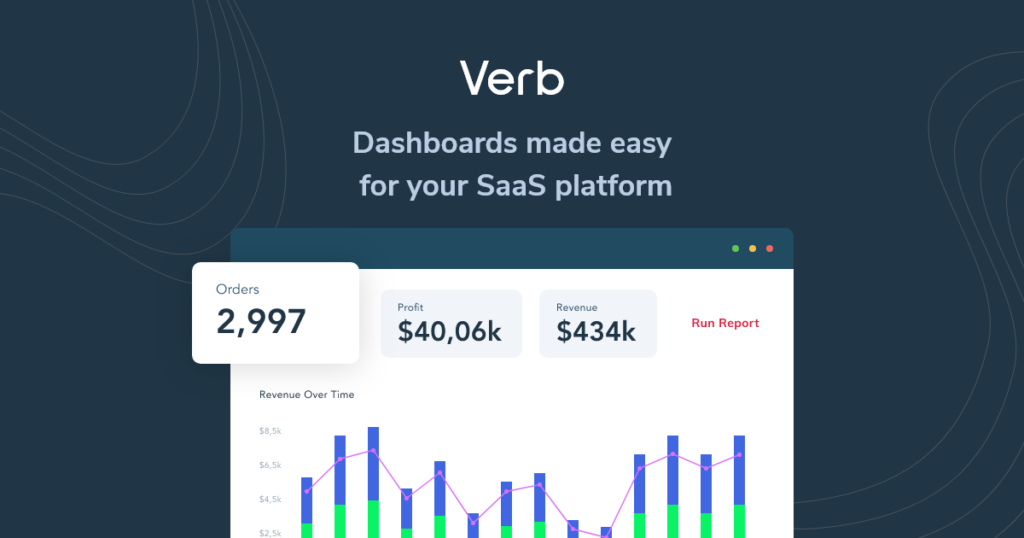
The idea that data visualization requires a high degree of technical expertise across a company’s tech stack means that the process of understanding key performance indicators (KPIs) in real-time can get messy unless members of your team are steeped in data and analytics backgrounds.
Demand is so high for analytics across every industry, in fact, that the market is expected to grow at a rate of 13.1% between now and 2025, and then continue to grow at 13.2% from 2025 to 2030, according to a recent industry report published by ResearchandMarkets.com.
SaaS companies are hit hardest by this need, as their end customers demand reporting solutions and data visualizations for the tech products they use. This is especially for companies that don’t primarily focus on analytics and reporting. Any integrative solution that could condense the data from a wide field of sources generated by the companies who use SaaS products into a user-friendly dashboard overview would be stepping into a market populated by very few challengers.
Fixing the problem from both the B2B sense and from the B2B2C sense would mean essentially outsourcing the entire process of business analytics into an automated cloud-based solution responsible for the entire data collation, warehousing, analytics, and visualization processes in a way that requires very little continued input from non-technical end-users.
Dave Hurt, CEO of Verb Data, sounds like he thinks he cracked the problem. Verb Data’s solution, called Verb, requires no knowledge of coding and allows companies to build out customizable reports, dashboards, and visualizations via an easy-to-use drag-and-drop interface equipped with data transformation tools to beautifully dissect business-critical information with ease.
The company Hurt runs along with business partner Oleg Fridman aims at alleviating heavy technical issues tied to data analytics faced by many companies, if not eliminating the problem entirely by outsourcing data generated by clients to Verb Data’s secure cloud-based analytics solution that warehouses, optimizes, cleans and feeds back visually compelling dashboards per request.
“Every chart that is built and embedded into a customer’s application is backed by a data warehouse that is specifically optimized for that chart without requiring any developer effort,” Hurt said in an interview with TechCrunch, “This allows software teams to focus on their core product while also providing their end-users with high-performing analytics dashboards.”
The way the company currently operates, Verb Data’s engineering addresses client requests (usually made by other engineers) directly. This allows immediate product feedback to help the company continuously evolve with each new client request while doubling as a form of market research on the cutting-edge of the data visualization and automation industry. And because Verb Data’s entire focus is to provide a customer-centric analytics solution to any company that generates data online, they’re able to help companies across multiple industries build products that solve problems.
In an interview with Medium, Hurt expressed the sentiment that valuing customer input is at the centerpiece of Verb Data’s business strategy.
“Value comes before monetization. If you can create a valuable enough community then it’s possible to monetize it but monetizing a community before there is any value will never work,” Hurt said. “We’re focused on value creation at this stage of our business and customer community.”
By seeking to solve a problem plaguing technical and non-technical end-users alike, Verb Data may be heralding a new era in which the power of cloud computing is utilized to help tech and non-tech companies alike unlock a wealth of data-backed insights that would’ve been virtually unimaginable or extremely expensive to uncover, otherwise.

This article includes a client of an Espacio portfolio company





